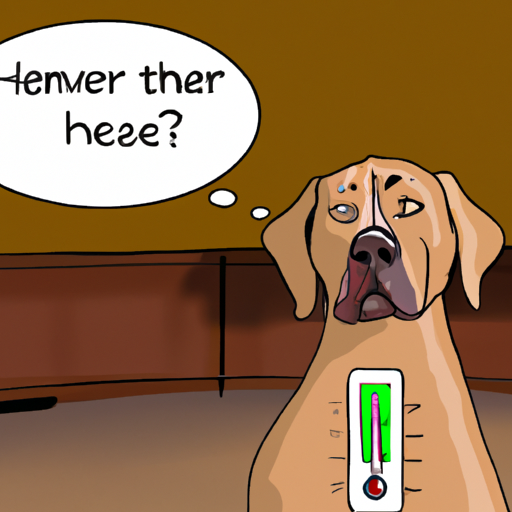As a caregiver, you probably know that dogs aren’t just pets, they’re family. Just as you wouldn’t want your child to be uncomfortable or in distress due to high temperatures, you wouldn’t want your furry four-legged family member to suffer either.
Understanding Your Dog’s Body Temperature
Firstly, it’s crucial to understand that dogs have a different body temperature than humans. Dogs typically have a body temperature of around 101-102.5°F. If their body temperature rises to 103°F, this can be a sign of heat stress. Anything above 106°F is a potentially life-threatening emergency.
- 101-102.5°F: Normal Dog Body Temperature
- 103°F: Possible heat stress
- 106°F: Life-threatening emergency
Ideal Indoor Temperatures for Dogs
So what does this mean in terms of the temperature in your home? The consensus among veterinarians and pet care experts is that the ideal indoor temperature for dogs is between 68-72 degrees Fahrenheit.
- 68-72°F: Ideal Temperature for Dogs
Factors That Influence Dog’s Comfort in Heat
Remember, comfort can depend on several factors including:
- Breed: Some breeds tolerate heat better than others. For instance, a Siberian Husky will be more sensitive to heat than a Chihuahua.
- Size: Larger dogs can often tolerate cooler temperatures better than smaller dogs.
- Age: Puppies and senior dogs may have more difficulty regulating their body temperature.
- Health Condition: Certain health conditions may make dogs more susceptible to heat.
Recognizing Signs of Heat Stress in Dogs
It’s crucial to keep an eye out for signs of heat stress, including:
- Excessive panting or difficulty breathing
- Increased heart and respiratory rate
- Drooling
- Mild weakness or even collapse
- Seizures
- Elevated body temperature (over 103°F)
How to Keep Your Dog Cool Indoors
If your home does get too hot, there are several things you can do to help your dog stay cool:
- Keep them hydrated: Always ensure your dog has access to fresh, clean water.
- Use fans or air conditioning: Help circulate air and cool down your dog’s environment.
- Provide cooling mats: These can be a great way to help your dog cool down.
- Limit exercise: On particularly hot days, it’s best to limit your dog’s physical activity.
FAQ
Q: What are the symptoms of a dog overheating?
A: Symptoms can include excessive panting, drooling, weakness, seizures, and an elevated body temperature.
Q: What breeds are most susceptible to heat?
A: Brachycephalic breeds like Bulldogs, Pugs, and Shih Tzus are particularly sensitive to heat.
Q: Is it okay to shave my dog to keep them cool?
A: Not necessarily. For many breeds, their coats actually provide insulation from the heat. Always consult with a vet before radically changing your dog’s coat.
Q: How can I cool down my dog if my home is too hot?
A: Providing ample water, using fans or AC, offering cooling mats, and limiting exercise can all help.
Remember, as a caregiver, your dog depends on you to provide a comfortable, safe environment. By monitoring your indoor temperature and watching for signs of heat stress, you can ensure your furry friend stays happy and healthy, no matter the weather.



